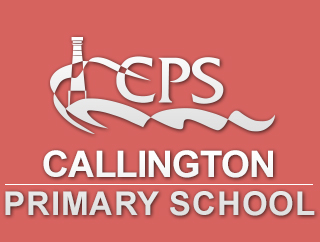Intent
At Callington, we are dedicated to deliver an exciting, innovative English curriculum which enables and empowers children to become articulate speakers, inspired writers and avid readers.
English is not just a daily discrete lesson but is at the cornerstone of the entire curriculum. It is embedded within all our lessons and we strive for a high level of English for all. Through using high-quality texts, immersing children in vocabulary rich learning environments and ensuring new curriculum expectations and the progression of skills are met, the children are exposed to a rich, creative and continuous English curriculum which will develop creative writing, purposeful speaking and listening and foster a love of reading for all.
Implementation
Writing
We believe that, in order to write high quality texts, children need to read high quality texts. It is our intention to immerse pupils within a text for them to fully understand the vocabulary and structure of the story.
At Callington we teach writing using Talk 4 Writing, developed by Pie Corbett. Talk for Writing is a fun, active and engaging process that enables children to imitate the language they need for a particular topic orally, before reading and analysing it and then writing their own version. Talk 4 Writing has three stages: Imitation, Innovation and Invention, with the aim of the whole process being to create independent, enthusiastic writers.
Imitation:
A typical Talk 4 Writing unit would be begin with a creative context, linked to their topic, as we know our children learn best when they are active, challenged and engaged. Through practical activities, children learn a model text, supported visually by a text map and physical movements. Children hear the text and say it for themselves before they see it written down.
Once the children know the text well they 'read it as a reader'. This involves in depth discussions around the text, focussing heavily on vocabulary and oral comprehension. Reading comprehension strategies such as: summarising, imaging, predicting and making connections are taught explicitly.
The next stage is 'read as a writer' which involves identifying the underlying patterns of both the overall organisation, as well as how the writer creates different effects. During these lessons, children practice specific skills which are found within the text. This could be work on sentence structure, punctuation or vocabulary. Children are given clear learning objectives for each lesson and success criteria to help them reflect upon their learning. Towards the end of this week, the original text is ‘boxed up’ (broken down into key sections) so that the structure becomes obvious, and can be used as a basic planning tool.
Innovation:
Once the children have internalised the text they are ready to start innovating. Younger children and less confident writers alter their text maps and orally rehearse what they want to say. More confident writers use the boxing up planning tool, then turn their plan into writing. This process enables children to write their own versions of the original text and develop their ability to generate high quality vocabulary and sentence structures.
Success criterias are provided to support the children through each writing genre, whilst encouraging the children to reflect on their own writing.
Children can innovate the model text in a variety of ways including: substituting characters and settings, writing prequels and sequels, introducing flashbacks and writing from a different characters perspective.
Invention:
Finally, children move into invention where they write the text type independently and apply what they have learnt across the curriculum to create an individual piece. This becomes a distance task which is assessed against the year group expectations.
During their time at Callington, children gradually develop a bank of well-known texts, supplemented by picture books, novels, poems and non-fiction books. Each year, this develops the children’s living library of high level vocabulary and creative writing techniques, building on previous learning and giving children confidence as writer. In the same way, the ability to manipulate that bank of texts increasingly enables children to create new versions and become inventive, blending and experimenting.
We believe that all children should have opportunities to:
-
Be immersed within a quality text.
-
Be exposed to high quality texts including high level vocabulary.
-
Develop a range of methods to communicate their ideas to an audience.
-
Write from a range of genres across fiction, non-fiction and poetry.
-
Write creatively drawing on their own ideas, interests and experiences.
-
Write for a range of purposes.
-
Use writing to demonstrate their learning through cross-curricular writing.
Grammar
Grammar is taught through the Talk 4 Writing process and this is made clear through grammar specific learning objectives. As well as this, children are explicitly taught grammar for a 15 minute literacy starter 3 times a week.
Teachers plan sessions based on the whole school grammar progression which is taken from National Curriculum expectations for each year group. Children are then expected to apply their grammar knowledge throughout each piece of writing.
Impact
The impact on our children is clear: progress, sustained learning and transferrable skills. With the implementation of the writing journey being well established and taught thoroughly in both key stages, children are becoming more confident writers and by the time they are in upper Key Stage 2, most genres of writing are familiar to them and the teaching can focus on creativity, writer’s craft, sustained writing and manipulation of grammar and punctuation skills.
As a result of high quality teaching and immersion in high quality vocabulary, children achieve well; this is reflected in results from national tests that not only meet government expectations but exceed them.
Children leave Callington with an extensively improved vocabulary, a passion for writing and high aspirations to continue to grow and develop throughout their education.
.

